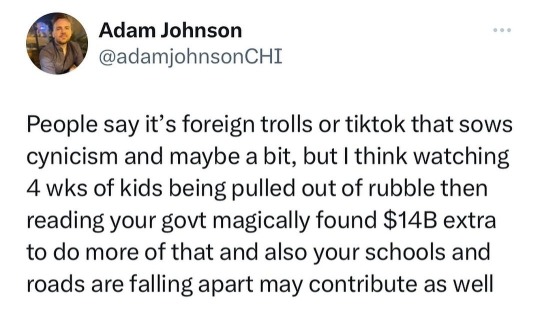Text


refseek.com
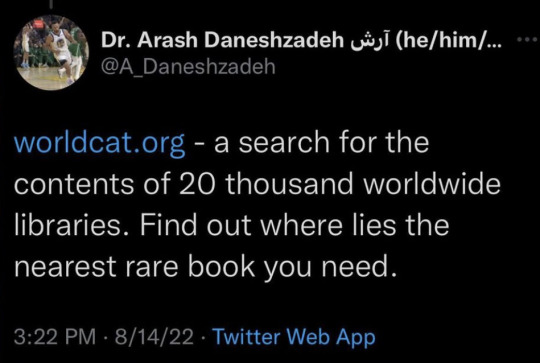
www.worldcat.org/
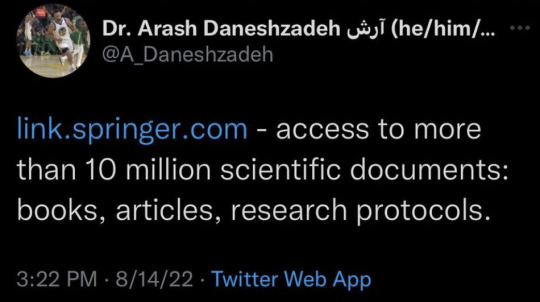
link.springer.com
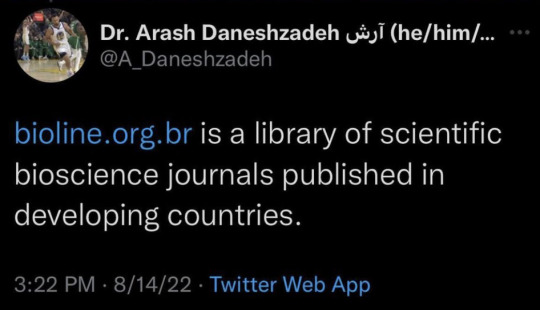
http://bioline.org.br/
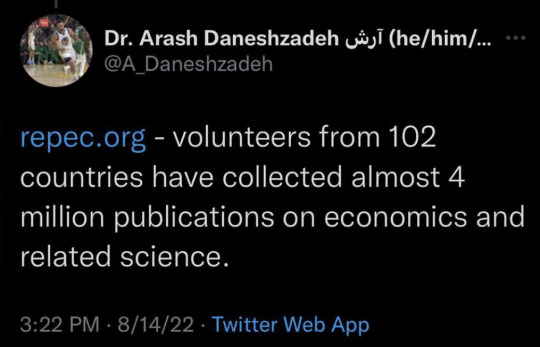
repec.org

science.gov

pdfdrive.com
296K notes
·
View notes
Text
Health organizations are warning of an imminent public health crisis in the Gaza Strip, where disruptions to health and water systems are raising the risk of disease outbreaks.
The International Rescue Committee (IRC) on Thursday warned of the inevitable spread of waterborne illnesses such as cholera and typhoid, caused by contaminated water sources and a lack of sanitation.
Currently, 95 percent of the population in Gaza has no access to safe water, while 64 percent of primary health facilities have shut down, IRC warns, as Israel conducts a lethal bombing campaign.
Continue reading.
7K notes
·
View notes
Text
why is it always Aurora Borealis and never Aurora Australis though she's beautiful too
49K notes
·
View notes
Text
Poison list
While it's important to approach writing with creativity and imagination, it's crucial to prioritize responsible and ethical storytelling. That being said, if you're looking for information on poisons for the purpose of writing fiction, it's essential to handle the subject matter with care and accuracy. Here is a list of some common poisons that you can use in your stories:
Hemlock: Hemlock is a highly poisonous plant that has been used as a poison in various works of literature. It can cause paralysis and respiratory failure.
Arsenic: Arsenic is a toxic element that has been historically used as a poison. It can be lethal in high doses and can cause symptoms such as vomiting, abdominal pain, and organ failure.
Cyanide: Cyanide is a fast-acting poison that affects the body's ability to use oxygen. It can cause rapid loss of consciousness and cardiac arrest.
Nightshade: Nightshade plants, such as Belladonna or Deadly Nightshade, contain toxic compounds that can cause hallucinations, respiratory distress, blurred vision, dizziness, an increased heart rate, and even death when ingested.
Ricin: Ricin is a potent poison derived from the castor bean plant. It can cause organ failure and has been used as a plot device in various fictional works.
Strychnine: Strychnine is a highly toxic alkaloid that affects the nervous system, leading to muscle spasms, convulsions, and respiratory failure.
Snake Venom: Various snake venoms can be used in fiction as deadly poisons. Different snake species have different types of venom, each with its own effects on the body.
Digitalis: Digitalis, derived from the foxglove plant, contains cardiac glycosides. It has been historically used to treat heart conditions, but in high doses, it can be toxic. Overdosing on digitalis can cause irregular heart rhythms, nausea, vomiting, and visual disturbances.
Lead: Lead poisoning, often resulting from the ingestion or inhalation of lead-based substances, has been a concern throughout history. Lead is a heavy metal that can affect the nervous system, leading to symptoms such as abdominal pain, cognitive impairment, anemia, and developmental issues, particularly in children.
Mercury: Mercury is a toxic heavy metal that has been used in various forms throughout history. Ingesting or inhaling mercury vapors can lead to mercury poisoning, causing symptoms like neurological impairment, kidney damage, respiratory issues, and gastrointestinal problems.
Aconite: Also known as Wolfsbane or Monkshood, aconite is a highly toxic plant. Its roots and leaves contain aconitine alkaloids, which can affect the heart and nervous system. Ingesting aconite can lead to symptoms like numbness, tingling, paralysis, cardiac arrhythmias, and respiratory failure.
Thallium: Thallium is a toxic heavy metal that can cause severe poisoning. It has been used as a poison due to its tastelessness and ability to mimic other substances. Thallium poisoning can lead to symptoms like hair loss, neurological issues, gastrointestinal disturbances, and damage to the kidneys and liver.
When incorporating poisons into your writing, it is essential to research and accurately portray the effects and symptoms associated with them. Additionally, be mindful of the potential impact your writing may have on readers and the importance of providing appropriate context and warnings if necessary.
If you want to read more posts about writing, please click here and give me a follow!

22K notes
·
View notes
Text
so I’m looking at short story publishers (fantasy)
Tor, cream of the crop. 25 cents a word. Stories can be read for free (YES). Slowish response time at ~3 months. Prefer under 12k, absolute maximum is 17.5k. Don’t bother if it’s not highly professional quality. SFWA qualifying.
Crossed Genres. 6 cents a word. Different theme each month (this month’s is “failure”). Submissions must combine either sci-fi or fantasy with the theme. Response time 1 month. 1k-6k, no exceptions. SFWA qualifying.
Long Hidden, anthology from CG. 6 cents a word. 2k-8k, no exceptions. Must take place before 1935. Protagonist(s) must be under 18 and marginalized in their time and place. Must be sci-fi/fantasy/horror. Deadline 30 April. Response by 1 October.
Queers Destroy Science Fiction. Sci-fi only right now, author must identify as queer (gay, lesbian, bi, ace, pan, trans, genderfluid, etc, just not cishet). 7.5k max. Deadline 15 February. Responses by 1 March. You can submit one flash fiction and one short story at the same time. (My network blocks the Lightspeed site for some reason, so I can’t get all the submission details. >_>) Probably SFWA qualifying?
Women in Practical Armor. 6 cents a word. 2k-5k. Must be about 1) a female warrior who 2) is already empowered and 3) wears sensible armour. Deadline 1 April. Response within three months.
Fiction Vortex. $10 per story, with $20 and $30 for editor’s and readers’ choice stories (hoping to improve). Speculative fiction only. Imaginative but non-florid stories. 7.5k maximum, preference for 5k and under. (I kind of want to support them on general principle.)
Urban Fantasy Magazine. 6 cents a word. 8k max, under 4k preferred. Must be urban fantasy (aka, the modern world, doesn’t need to be a literal city).
Nightmare. 6 cents a word. 1.5-7.5k, preference for under 5k. Horror and dark fantasy. Response time up to two weeks. SFWA and HWA qualifying.
Apex Magazine. 6 cents a word. 7.5k max, no exceptions. Dark sci-fi/fantasy/horror. SFWA qualifying.
Asimov’s Science Fiction. 8-10 cents a word. 20k max, 1k minimum. Sci-fi; borderline fantasy is ok, but not S&S. Prefer character focused. Response time 5 weeks; query at 3 months. SFWA qualifying, ofc.
Buzzy Mag. 10 cents a word. 10k max. Should be acceptable for anyone 15+. Response time 6-8 weeks. SFWA qualifying.
Strange Horizons. 8 cents a word. Speculative fiction. 10k max, prefers under 5k. Response time 40 days. Particularly interested in diverse perspectives, nuanced approahces to political issues, and hypertexts. SFWA qualifying.
Fantasy and Science Fiction. 7-12 cents a word. Speculative fiction, preference for character focus, would like more science-fiction or humour. 25k maximum. Prefers Courier. Response time 15 days.
Scigentasy. 3 cents a word. .5-5k. Science-fiction and fantasy, progressive/feminist emphasis. Fantastic Stories of the Imagination. 15 cents a word. 3k maximum. Any sci-fi/fantasy, they like a literary bent. (psst, steinbecks!) They also like to see both traditional and experimental approaches. Response time two weeks.
Beneath Ceaseless Skies. 6 cents a word. 10k maximum. Fantasy in secondary worlds only (it can be Earth, but drastically different—alternate history or whatever). Character focus, prefer styles that are lush yet clear, limited first or third person narration. Response time usually 2-4 weeks, can be 5-7 weeks. SFWA qualifying.
Clarkesworld. 10 cents a word up to 4000, 7 afterwards. 1-8k, preferred is 4k. Science-fiction and fantasy. Needs to be well-written and convenient to read on-screen. Appreciates rigour. No talking cats. Response time 2 days. SFWA qualifying.
Orson Scott Card’s Intergalactic Medicine Show. 6 cents a word. Any length. Science-fiction and fantasy (along with fantastic horror). Good world-building and characterization. Clear straightforward prose. Response time three months. Yes, OSC is editor-in-chief. SFWA qualifying.
Interzone. Sub-pro rates if anything (but highly respected). 10k max. Short cover letter. Science-fiction and fantasy.
49K notes
·
View notes
Text
it still amazes me that CRWBY created a world where a world-wide infestation of soulless, violent monsters is a constant and omnipresent fact of life, where entire villages and towns and cities are wiped off the face of the planet because huntsmen and huntresses are unreliable and often aren’t where they are needed most, leaving entire populations of people to be torn apart by said world-wide monster infestation (or, like, roving bands of murderous thieves who take advantage of the situation)
and they still managed to cultivate a fanbase that thinks ‘military bad’ makes any kind of sense as an analytical lens for the show
72 notes
·
View notes
Text
Plot Devices to Complicate Your Story
You're excited to write an upcoming story, but the plot seems pretty simple from start to finish.
How can you make it more complicated to deepen your themes, lengthen the story, or leave your readers with plot twists that make their jaws drop?
Try a few of these devices 👀
Add motivation to your instigating action
When the princess gets kidnapped at the start of your story, your hero will rescue her, but what's the antagonist's motivation for kidnapping her? If they're in love with the hero and take their jealousy to the extreme or secretly know that the princess asked them for an escape plan to avoid marrying your hero, the plot is much more compelling.
You could add this detail anywhere in your plot, even in the first chapter.
Layer a second motivation underneath an action
After the princess is kidnapped, the hero starts their journey to rescue her. The reader finds out in the second chapter that the hero is being blackmailed to retrieve the princess and return her to their kingdom's biggest rival to start a war.
Amplify the original problem
Your protagonist rescues the princess and brings her home, only to find out that she's had a twin brother all this time who has been taken hostage by the antagonist in retaliation for the princess' escape.
Introduce a second, more evil villain
The antagonist has kidnapped the princess for their own motivation, but the reader discovers in the middle of your story that they serve a more evil villain who holds a personal grudge against the princess' father and wants his whole kingdom to suffer as revenge.
Create conflict that brings your protagonist to their rock bottom
The protagonist rescues the princess, almost reaches their home kingdom, but she escapes. The king sends the protagonist to prison for their failure and sentences them to death in three days. The reader will feel the hopelessness along with your protagonist, which is where you can create something that injects new hope into your plot (like a dramatic jailbreak thanks to the protagonist's best friend).
Make a character betray another
The protagonist reaches the princess with the help of their best friend, but the princess stabs the protagonist in the back by trading their best friend for herself through an unbreakable vow
Reveal an unreliable narrator
Your protagonist agrees to rescue the princess for the sake of the kingdom, but the second or third chapter reveals that they are really on a mission to kill the princess for personal revenge against the king.
Reveal that the villain has known everything the whole time
Your protagonist and princess escape, but the villain factored that into their plan to start a war and have their forces waiting outside of her castle when they arrive home
Introduce sudden regret that changes a character's arc
The protagonist has to leave their best friend behind to ensure the princess' escape, but in leaving them, the protagonist realizes they've been in love with their best friend the entire time. Regret motivates them to head back for their best friend and risk their life twice as soon as the princess is home safe.
Temporarily kill a character
The princess kills the villain with some help from your protagonist, so they think they're safe. On their way back home, the villain sets a trap for them in the woods because they actually survived the attack.
Try using Chekov's gun
Before leaving for the princess, your protagonist gets a potion made by a family member. The directions? "Use it in your moment of greatest need." The protagonist uses it later when they're facing the villain or after hitting rock bottom, so the potion becomes a plot device that instigates your second or third act.
Accelerate the plot
Your reader thinks the plot is all about rescuing the princess, but she returns home in the first 100 pages. The real plot begins by choices or actions made during her rescue, which unravel into a much larger story/world event.
You likely won't be able to use all of these plot devices in a single story. You may not even have the first plot for more than one.
Consider what you're writing and what dynamics your characters/plot present to decide if any of these tricks could enhance your writing.
4K notes
·
View notes
Text
3 Ways to Write Scene Transitions
Moving from one scene to another in your short story or novel can be challenging. If your plot spans more than a day or a week, you've got plenty of time to cover.
How do you transition your scenes without jumping over crucial plot points or making the pacing feel rushed?
There are a few tips you can try when you're facing this problem.
1. Tease What's to Come
Let's say you've started a chapter with your protagonist encountering people they don't like while shopping at the grocery store with their exhausted two-year-old. The experience is frustrating, so your protagonist is simmering while sitting at a red light on the way home.
The main action of the chapter happens when the babysitter arrives that night, but it's only 12 o'clock in your scene. You needed your protagonist to encounter the people that annoy them to establish motivation for the action later on.
You could jump time by teasing the action itself. Your protagonist could thrum their fingers on the steering wheel and glare at the red light.
They opened their arms to the resentment churning under their skin. It sank into their bones, morphing into electricity that kept [Protagonist] plodding through their day. The red light mocked their need to take action, but they could wait.
Because when the babysitter showed up that night, they would take their revenge out on the city.
That could be a great place for a scene break or even the end of your chapter, depending on how much you've written. The reader won't mind a time jump because their interest gets piqued. They'll want to know what revenge means for that character and what will spin out from the choices they make.
2. Switch Points of View
If you're writing a 3rd person POV story with perspectives from at least two characters, you can also transition scenes by switching narrators.
While one character completes a plot-relevant action, the other could move the plot along by being a bit further in the future.
Consider something like this as an example:
Sarah's heart beat wildly in her chest as the heavy words finally fell from her lips. It was just the two of them in that park, but it had felt like the whole world had watched her admit her love for Melanie in the molten gold rays of the setting sun. All she needed now was an answer.
[Scene break symbol or the start of a new chapter]
Melanie heard Sarah's heartfelt words echo in her ears long after she had mumbled something about needing time. Time to think, to process. Sarah had been so understanding, even when she dropped Melanie off at home right afterward and skipped their usual Facetime call that night.
It wasn't until Melanie woke up the next morning in a sweat that she realized she finally had to unearth her biggest secret—she had only started the friendship with Sarah because she'd been in love with Sarah's older sister since the second grade.
You could make that time jump into however long you needed. Play with the scene set up in particular and then give the page or two to whoever loves to read your writing. They could talk about if it felt like a rushed scene or if the time jump felt right for that moment.
3. Wrap Up the Moment
Most of the time, I find myself struggling with a scene transition because the moment that I'm writing isn't finished.
Recently I was writing a scene with two friends in a wagon on their way to a new city. They have a great conversation that sparks some character development in-between plot points, but I could feel that conversation coming to a lull.
It felt like the right moment to insert a transition, but something didn't feel right.
I had to walk away from my work and come back to it to realize that I needed to wrap up the moment to move anything forward.
The solution I found was ending the conversation by making them appreciate their friendship more than before, based on what had been said, and then the protagonist ended the scene by reflecting on how they knew they could face anything in the new city with their friend by their side.
The next scene started with their wagon approaching the city walls after a night of sleeping under the stars. The reader will still understand that it took more time to reach their destination, but they don't have to read excessive details about the cold night air or hard ground under the protagonist's back to get to what they're most looking forward to—the arrival at the new city.
Nothing about that night would add anything to the plot, so dropping the overnight experience at the beginning of the sentence makes for a great transition to the next scene.
Make Your Transitions Clear
Whether you end a scene with a cliffhanger, a heartfelt moment, or by switching between points of view, your transitions should always help the plot.
You can always edit them while reworking the finished draft later or ask for beta reader opinions from the people who always love reading what you write.
3K notes
·
View notes
Text
I do the hero’s journey every day but I don’t make a big deal about it
50K notes
·
View notes
Text
OH MY GOD whyyyy did no one tell me you’re supposed to send thank-yous after interviews?? Why would I do that???
“Thank you for this incredibly stressful 30 minutes that I have had to re-structure my entire day around and which will give me anxiety poos for the next 24 hours.”
I HATE ETIQUETTE IT’S THE MOST IMPOSSIBLE THING FOR ME TO LEARN WITHOUT SOMEONE DIRECTLY TELLING ME THIS SHIT
444K notes
·
View notes
Text
WEBSITES FOR WRITERS {masterpost}
E.A. Deverell - FREE worksheets (characters, world building, narrator, etc.) and paid courses;
Hiveword - Helps to research any topic to write about (has other resources, too);
BetaBooks - Share your draft with your beta reader (can be more than one), and see where they stopped reading, their comments, etc.;
Charlotte Dillon - Research links;
Writing realistic injuries - The title is pretty self-explanatory: while writing about an injury, take a look at this useful website;
One Stop for Writers - You guys... this website has literally everything we need: a) Description thesaurus collection, b) Character builder, c) Story maps, d) Scene maps & timelines, e) World building surveys, f) Worksheets, f) Tutorials, and much more! Although it has a paid plan ($90/year | $50/6 months | $9/month), you can still get a 2-week FREE trial;
One Stop for Writers Roadmap - It has many tips for you, divided into three different topics: a) How to plan a story, b) How to write a story, c) How to revise a story. The best thing about this? It's FREE!
Story Structure Database - The Story Structure Database is an archive of books and movies, recording all their major plot points;
National Centre for Writing - FREE worksheets and writing courses. Has also paid courses;
Penguin Random House - Has some writing contests and great opportunities;
Crime Reads - Get inspired before writing a crime scene;
The Creative Academy for Writers - "Writers helping writers along every step of the path to publication." It's FREE and has ZOOM writing rooms;
Reedsy - "A trusted place to learn how to successfully publish your book" It has many tips, and tools (generators), contests, prompts lists, etc. FREE;
QueryTracker - Find agents for your books (personally, I've never used this before, but I thought I should feature it here);
Pacemaker - Track your goals (example: Write 50K words - then, everytime you write, you track the number of the words, and it will make a graphic for you with your progress). It's FREE but has a paid plan;
Save the Cat! - The blog of the most known storytelling method. You can find posts, sheets, a software (student discount - 70%), and other things;
I hope this is helpful for you!
(Also, check my blog if you want to!)
73K notes
·
View notes
Photo

This image hurts my brain more than the original debate ever did. Brains are dumb.
473K notes
·
View notes
Link
In the final days of 2021, we’re revisiting our most viewed articles of the year. Today, we’re re-sharing the second most popular post of 2021: 101 Horror Tropes For Writers
154 notes
·
View notes


